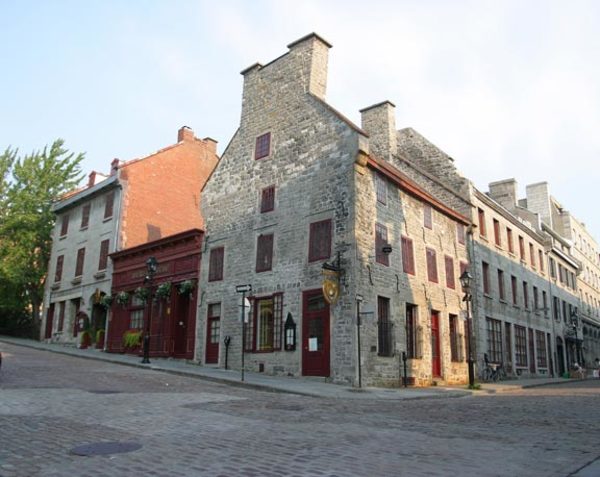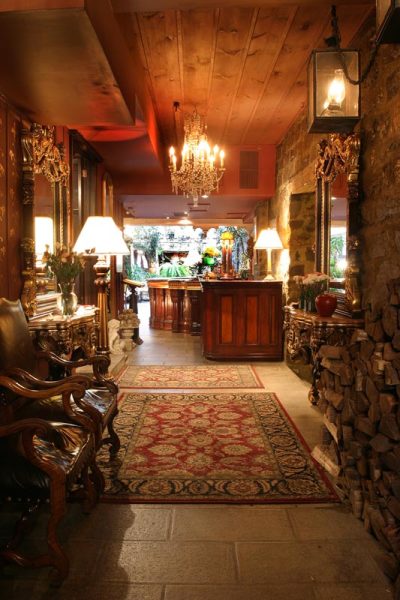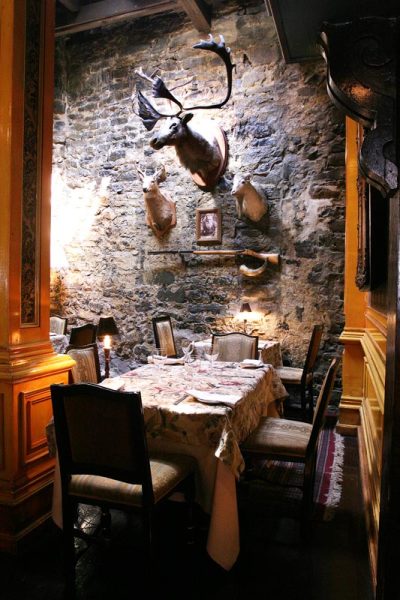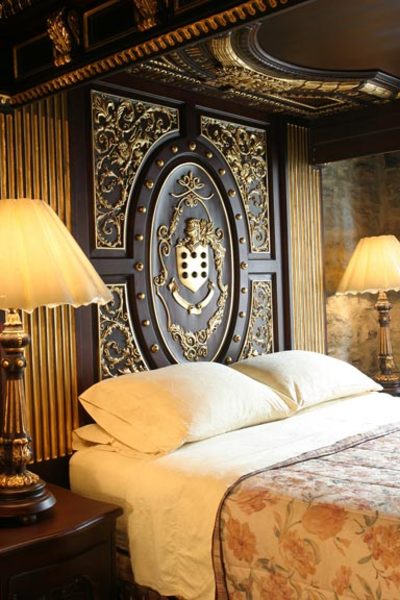The oldest part of the Maison Pierre du Calvet, a 1725 Breton-style stone house originally used as a warehouse, stands just across the street from the historic Notre-Dame-de-Bonsecours church.
Historic preservation runs in Gaëtan Trottier’s blood. As a child growing up in the 1960s, the proprietor of the Maison Pierre du Calvet in Old Montreal watched as his parents successfully fought the construction of a superhighway that would have decimated the now-celebrated historic quarter of the city. As part of their quest to turn the virtually abandoned district into a bustling, preservation-minded hotspot, in 1962, the elder Trottiers moved their family into an 18th-century stone house once owned by French-Canadian merchant and revolutionary Pierre du Calvet. They opened a restaurant, Les Filles du Roy, on the ground floor, and their family of nine inhabited the three floors above it.
“Old Montreal had been abandoned, so it was like living in a small village,” Trottier recalls. “We knew all of our neighbors—everyone who bought a house here wanted to preserve the neighborhood. They are the reason why we still have Old Montreal.”
The lobby is bordered by the sunny Victorian-style greenhouse, created in the 1960s by enclosing a courtyard between two of the houses.
Trottier also fondly remembers following the stonemason hired by his parents as he meticulously restored the home’s ancient stone walls; it was experiences like this that entrenched in him a deep love for old buildings. In 1992, Trottier and business partner Ronald Dravigné took over the management of the café and added a gourmet grocery. While Trottier still called a small corner of the building home, he no longer needed the majority of the space, so the two men eventually turned the upper floors into a 10-room inn.
“We wanted to keep the atmosphere of a family home,” says Trottier. “We could have put in more rooms, but we wanted to retain the charm of the house.”
In addition to the 10 guest rooms, the inn also boasts a cozy, fire-lit dining room that’s home to Les Filles du Roy and its traditional Quebeçois fare, a small salon that can be reserved for private meals, a library, a Victorian-style greenhouse that’s home to a smattering of parrots, a sunny terrace, and a gallery that showcases Trottier’s bronze sculptures. (In addition to being a historic-preservation enthusiast and hotelier, he’s also a talented artist.)
In the dining room, antique hunting trophies, accompanied by a portrait of co-owner Ronald Dravigné’s grandfather, pay tribute to Quebec’s hunting legacy.
This eclectic collection of spaces fits together almost like a puzzle in what was originally three separate houses. The oldest of the three is the 1725 stone house, which holds the guest rooms, gallery, and Les Filles du Roy; it was originally used as a warehouse by Pierre du Calvet for his thriving import-export business. (In his spare time, du Calvet found time to advocate for democratic rule in Quebec, counting Benjamin Franklin among his cohorts.) Today, the building is the oldest home in Montreal open to the public.
While the heavy lifting on restoring the buildings was completed by Trottier’s parents in the 1960s (they oversaw restoration of the stone façade and replaced the rotted wood casement windows with exact replicas copied from an original), he still keeps himself busy caring for the old house. The greenhouse roof was recently repaired, and a new cycle of mortar restoration has begun on the stone walls. “There’s always some important work to do on the house,” Trottier observes.
Converting the building into a hotel has proved to be his biggest task, although even that challenge was simplified by the fact that the upstairs floors had already been used as living space. Trottier reconfigured the layouts of the existing rooms to give each space a private bathroom, leaving the distinct stone walls and age-old wooden ceiling beams intact.
Each of the guest rooms’ mahogany canopy beds prominently features the coat of arms of the Trottier fellowship, whose motto translates to “My house is your house.”
He then thoughtfully furnished the inn with a careful mix of antiques and reproduction pieces. English Chesterfield sofas and hunting trophies mingle with Louis XIII tapestry chairs and a retrofitted gaslight chandelier in the opulent dining room. Family heirlooms are scattered throughout the inn in a nod to his family’s role in the house’s history—his grandmother’s dining set, for example, resides in the Salon Beaupré. For the guest rooms, Trottier commissioned a Honduran designer to create French Regency-style mahogany canopy beds, dressers, and desks, all of which are detailed with his family’s crest.
“I did a drawing of Louis XIII’s bed and took the plans to Honduras,” Trottier says. “It was a two-year job, but it was worth the effort.”
Like his parents before him, Trottier stands firm on the principle of honoring the past; as a result, the Pierre du Calvet inn retains plenty of the Old World atmosphere that the original preservationists in Old Montreal strove to create. And, just like in the 1960s, he has plenty of support in his efforts: “People are more conscious of historic preservation in Old Montreal,” he says. “It’s still a community of old-house lovers.”







